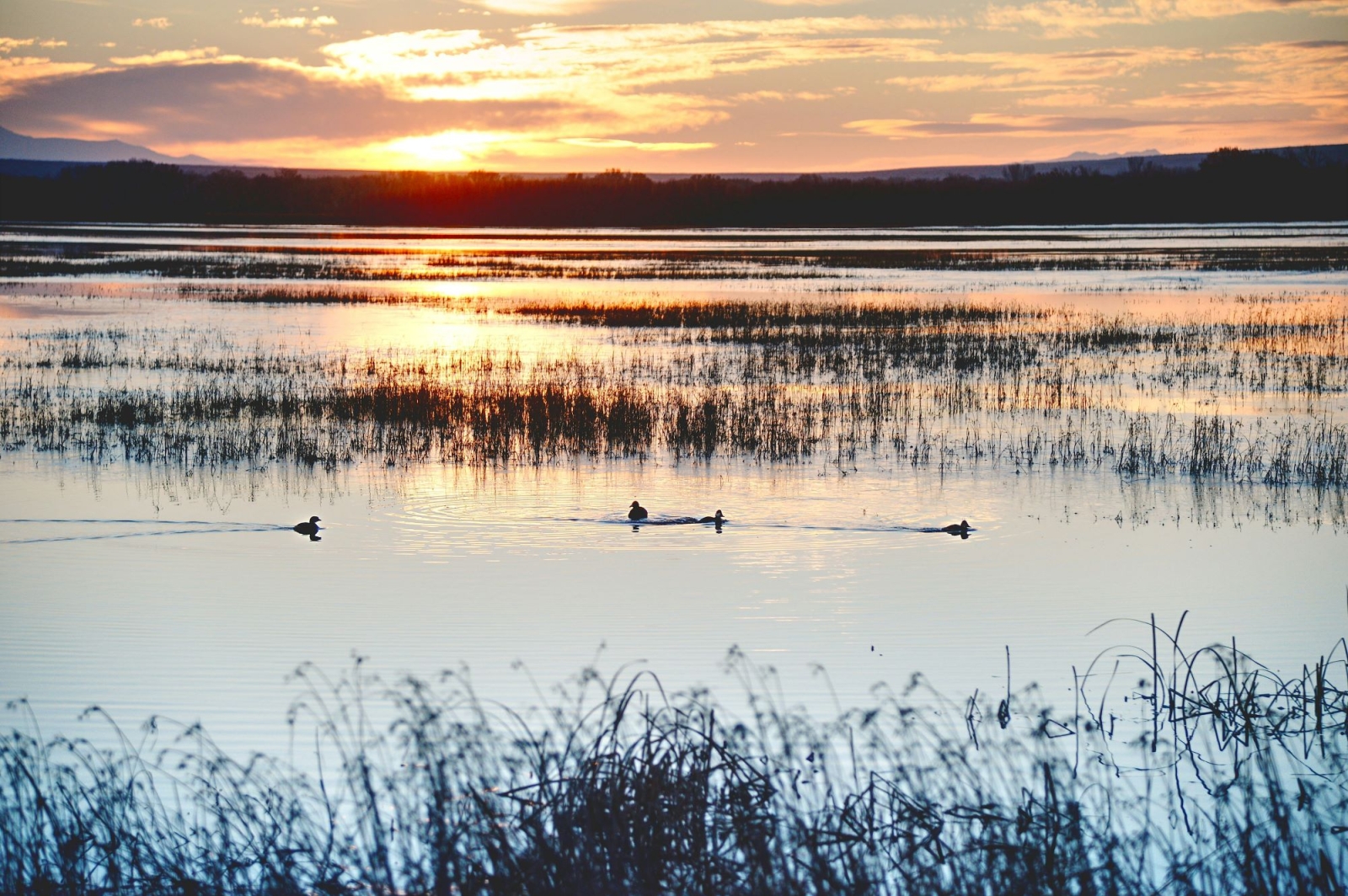The 2nd of February marks World Wetlands Day, in other words, lagoons, bogs, ponds, and lakes. Cradles of often endangered biodiversity covering only 6% of the Earth's surface, and yet these ecosystems are fundamental to human survival and well-being, whether it is a matter of securing safe drinking water and food or protecting people from extreme weather and climate events.
It is no coincidence, however, that World Wetlands Day is celebrated on the 2nd of February. On this date, back in 1971, the Convention on Wetlands was adopted. A convention of international importance, better known as the Ramsar Convention, named after the Iranian city in which it was signed. The first among modern global intergovernmental treaties on the conservation and sustainable use of natural resources.
Since then, 172 countries have voluntarily joined, nationally declaring 2,503 wetlands. Managing this framework is a complex exercise, ranging from diplomacy and finance to conservation practices, from gender issues to indigenous knowledge, from urbanization to emerging pollutants. Renewable Matter discussed this with Musonda Mumba, Secretary General of the Ramsar Convention on Wetlands.
What is the theme of this World Day?
This year's theme is extremely crucial because it concerns the connection between wetlands and human well-being. As early as 1971, more than 50 years ago, the founders of the Convention talked about the issue regarding the wise use of wetlands. An aspect that largely relates to how people use these spaces, as well as awareness of the importance of biodiversity, birdlife, insects, fish, and the countless plant species that depend on these ecosystems.
An example of the wetlands-wellness connection?
In the United States, a prolonged drought period in one of Utah's salt lakes led to dust storms. For instance, the chemicals in these dusts are very problematic for people with lung difficulties. Proving how the absence of water in ecosystems that should normally be plentiful has health implications.
Does the same happen with forest fires, such as those that occurred in Canada?
Most of those fires occurred in peatland ecosystems. When peatlands have substantially less water, the fire persists even for many weeks. We have seen this in Indonesia as well, and the consequences go beyond the country's borders. Smoke and pollution do not respect political boundaries. A year ago, even New York City found itself shrouded in an orange haze due to pollution from wildfires in Canada.
Then there is water pollution, including emerging pollutants such as microplastics.
Certainly. There are also PFAS, so-called "forever chemicals" that do not naturally degrade and have very serious health implications, acting as endocrine disruptors. As for diseases, in my country, Zambia, right now there is a cholera outbreak going on, which is an infectious disease that can become a public health problem in cities, also as a consequence of flooding. Malaria itself has a lot to do with water, as mosquito breeding occurs mostly in wetlands. However, we are seeing some progress. Cape Verde recently announced that they have eradicated malaria. How did they achieve this? There are so many experiences and lessons we want to hear from the grassroots, including from the political process.
What, on the other hand, are the impacts of climate change at higher latitudes?
One of the most complex aspects that people have not yet understood is the retreat of ice in regions characterized by permafrost. The vast majority of wetlands in Alaska or Siberia are frozen for most of the year. This ice thawing sets a very dangerous precedent because suddenly we will be exposed to unknown viruses. This is closely related to climate change. We also must think about the circular complexity of these problems.
In 2018, the Contracting Parties of the Convention adopted the first resolution recognizing the importance of addressing gender equality and women's empowerment in the implementation of the Convention. Why?
I recall that when I was a child, whenever my grandmother would glance up during the rainy season and see swallows, she would tell us that rainfall was imminent. Indigenous knowledge and traditional systems are handed down from one generation to the next, and the implications and use of wetlands have mostly been the domain of women.
When the Iraqi marshes were largely destroyed, women were instrumental in restoring these ecosystems. Similarly, in Europe, in Doňana, Spain, or Italy, many seasonal harvesters are employed. Indeed, the harvesting of many products takes place in wetlands. In mangrove systems in South America or Africa, it also concerns fish resources and fish drying is practiced mainly by women, who are involved in the ecosystem and its use but often go unrewarded. Sometimes they also become victims, as, for example, in Lake Chad, whose waters we have seen shrink by more than 95%. Where there are conflicts, women become victims of these circumstances. However, at the same time, they are also the solution because they mediate by trying to be the bridge-builders within communities.
As of 2018, 43 cities in 17 countries have been officially recognized as "Wetlands cities" under the Ramsar Convention on Wetlands. Why did you launch a specific accreditation?
In less than 20 years more than 60% of the world's population will live in urban areas. And in most of these cities, the water supply is either groundwater or water from outside the city. This accreditation is closely related to the role of wetlands for humans and their well-being, but also for nature and migration routes. In Asia, along the East Asian-Australasian Flyway, most of the accredited cities are megalopolises.
Birds fly across long distances and over these built-up areas. For this reason, we have been working with countries and their city governments in order to create water spaces for the birds to rest and continue their migration. One of the swamp cities accredited during the last Conference of the Parties in Geneva was Kigali, in Rwanda. Kigali is a small city, but its freshwater flows through a huge network of wetlands that was initially overgrown by industrial areas. President Kagame has asked entrepreneurs to move manufacturing sites away from the wetlands so that the ecosystem could be restored. Water quality has improved dramatically. Species of birds that had not been seen for years, many, many years, have returned.
Speaking of the so-called "elephant in the room," has finance started to notice the importance of wetlands?
Regarding multilateral development banks, the Asian Development Bank was the first to provide innovative financing under one of the regional initiatives, the East Asia Ramsar Initiative. In contrast, the European Investment Bank has divested from fossil fuels, an industry that has implications for wetland ecosystems. We had one of the most interesting funding mechanisms for Uganda. We worked closely with the United Nations Development Program (UNDP) to secure $30 million from the Green Climate Fund to support the government on wetlands issues solely. Ecosystems that also include peat and freshwater.
However, we must ask ourselves how to leverage these funding mechanisms to invest in adaptation. How do we adapt to temperature fluctuations or loss of space? The reality is that there will be places that will disappear forever if they dry up. This financing element is on the table and we will be involved in this as early as the next World Water Forum, which will be held in Bali in May.
How can we redirect resources for more nature-based management?
There is a lot of discussion right now about carbon credits and the use of this mechanism. However, this also requires suitable rules and regulations. What exactly does it mean to invest in a wetland, for a specific mangrove system? What does it mean for the people? What does it mean for the community that depends on this ecosystem? And how can we think in terms of innovative financing?
What will be needed hand in hand with finance?
This is an issue that will require proper regulation and a lot of transparency. Honesty and governance will be needed. What policy and programmatic structures are present on both sides of the spectrum, both in the private sector and the public one? We have seen so many stories of companies saying, "This land is ours and it belongs to us." And that creates conflict in many spaces. In Africa, for example, ownership issues are very complex and sensitive. It will be critical to figure out how to talk about financing from a truly transparent perspective.
This article is also available in Italian / Questo articolo è disponibile anche in italiano
Immagine di copertina: Unsplash
© all rights reserved



